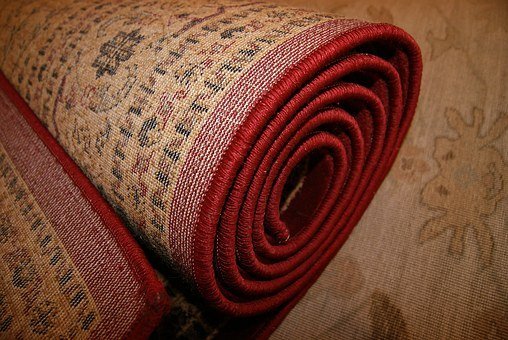Table of Contents Show
Bathroom issues are some of the most common maintenance problems you can encounter as a homeowner.
Even though the space is small, there’s a wide range of things that can happen – and very often, you have to deal with them yourself.

Don’t worry, though – it’s not as challenging as it may seem.
Leaky faucets and clogged drains are minor nuances that are easy to manage – you probably won’t have problems fixing them after reading this article.
However, some severe issues may require you to call the plumber – for example, sewer smells.
If you don’t know how to fix a bathroom issue, don’t hesitate to ask for help – for example, check the Bathroom Plumbing Services for the Chicagoland Region.
After all, you don’t have to be a superhero every day.
And if you still want to try – here are the 3 most common bathroom issues and how to fix them.
1. Leaky Faucet
In most cases, you can fix a leaky faucet on your own. However, if you’re not sure where the problem is coming from, it’s probably better to call the plumber.
Depending on the issue, they may be able to solve it in just a couple of minutes with just one visit.
But if you feel like you can’t wait for the plumber to come and fix the problem – try these steps to fix your leaky faucet:
Step 1. Turn It Off
Before you do anything, make sure that the faucet is completely off. Try turning off the main water supply or use a handy wrench. After that, find the shut-off valve and turn it off as well.
Step 2. Disassemble the Faucet
After you’ve turned the water off, you’ll need to disassemble the faucet. Unscrew the handle from the stem and then remove the nut underneath.
Next, remove the packing nut and the packing. After that, all you need to do is to detach the stem by unscrewing it from the cartridge.
If necessary, remove the cartridge and inspect it. In most cases, if there is a leak, this part can be replaced (make sure you buy a new cartridge before you start working).
However, if you can’t identify the cause of the leak – replace the entire faucet.
Bonus: If you’re having problems with removing the nut underneath the sink – try this method: you need a gear wrench and some lubricant (we recommend a spray lubricant).
Put some lubricant on the rusty area and turn the wrench counterclockwise while spraying. Hopefully, it will make the job easier for you.
Step 3. Clean Everything
After you’ve removed all of the parts, wash them carefully with water and vinegar. If you want to clean them further – you can use baking soda and vinegar.
Also, make sure that your faucet is clean and dry before you reassemble it. As soon as it’s done, turn the water back on and check for leaks.
Hopefully, this will fix your leaky faucet without much effort.
Read Also:
2. Clogged Drain
If your drain gets clogged, it can lead to some serious problems. Some materials can solidify in your drain and build up over time.
If that happens, it can cause your pipes to burst or slow down your water flow. But don’t worry, we’ll tell you how to fix a clogged drain in no time!
Step 1. Clear Everything from the Drain
Before you begin, make sure that there’s nothing in your drain. This way, you can avoid injuries and save yourself from unnecessary frustration.
And before you use any DIY methods, try pouring some hot water into your drain or using a snake (you can buy it at your local hardware store). If that doesn’t work – keep reading!
Step 2. Try to Use Baking Soda and Vinegar
When it comes to clogged drains, there are many possible DIY solutions that can help you fix them with ease.
One of them is baking soda and vinegar. All you need to do is to pour a cup of vinegar into the drain and follow up by adding a cup of baking soda.
Let this sit for about 15 minutes and try flushing it with hot water afterward.
Step 3. Use Drano or a Caustic Cleaner
If vinegar/baking soda didn’t work for you – try using Drano or other caustic drain cleaners.
Drano comes in different forms (liquid, gel, or powder) but there are other brands that can help you out too.
This method is fairly simple – just pour a small amount of caustic cleaner into your drain and wait for it to work its magic.
3. Mold in Your Shower/Toilet/Sink Area
Mold is not only unsightly but also pretty dangerous because it may cause respiratory issues/allergies in many people – not to mention that it may lead to bigger problems like bathroom plumbing issues or damage to your property.
Depending on where the mold is located, you might need a different method of getting rid of it. Here is:
How to Clean Mold from the Shower or the Toilet
To clean away mold from the shower or the toilet, all you need to do is to prepare some cleaning supplies (we recommend bleach or vinegar) and a scrub brush.
After that, apply some of the cleaning solutions to the affected area. Make sure that you cover the entire area – this will help prevent the problem from returning.
Let the solution sit for a while and then scrub away the mold using a scrub brush. Wash off everything with water afterward. If the problem persists – check for leaks!
How to Clean Hard Water Stains
When it comes to hard water stains, you can remove them with ease – all you need is some vinegar, a bottle brush, a toothbrush, and a bucket filled with hot water.
First, pour some vinegar over the affected area and let it sit for about 10 minutes. After that, scrub away the stain using a bottle brush.
You can also use a toothbrush if necessary. After that, rinse off everything with hot water and wipe it dry with a towel. That’s it!
The Bottom Line
Just because the bathroom is usually the smallest part of the house, it does not mean that there aren’t a lot of things that can happen – quite the opposite.
From a leaky faucet to a damaged pipe, there’s a variety of things that can go wrong.
Depending on how serious the issue is, in some cases, you will be required to call a professional, while others are easy enough to fix you can do it yourself – we have presented a few of those in this article.
Besides, choosing to DIY has its benefits – not only can you save money, but also time. It’s a win-win if you ask us. Good luck.









